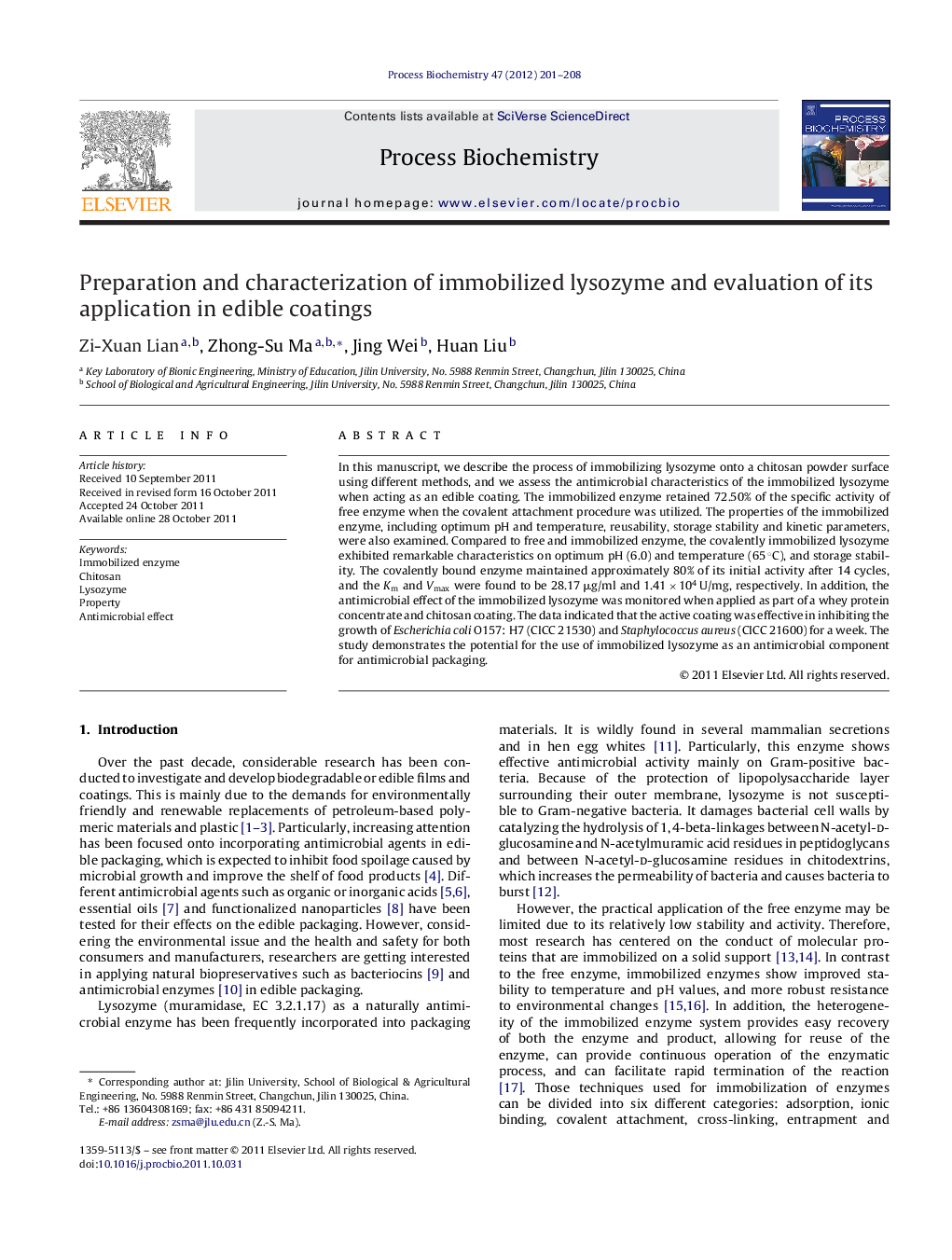| Article ID | Journal | Published Year | Pages | File Type |
|---|---|---|---|---|
| 34921 | Process Biochemistry | 2012 | 8 Pages |
In this manuscript, we describe the process of immobilizing lysozyme onto a chitosan powder surface using different methods, and we assess the antimicrobial characteristics of the immobilized lysozyme when acting as an edible coating. The immobilized enzyme retained 72.50% of the specific activity of free enzyme when the covalent attachment procedure was utilized. The properties of the immobilized enzyme, including optimum pH and temperature, reusability, storage stability and kinetic parameters, were also examined. Compared to free and immobilized enzyme, the covalently immobilized lysozyme exhibited remarkable characteristics on optimum pH (6.0) and temperature (65 °C), and storage stability. The covalently bound enzyme maintained approximately 80% of its initial activity after 14 cycles, and the Km and Vmax were found to be 28.17 μg/ml and 1.41 × 104 U/mg, respectively. In addition, the antimicrobial effect of the immobilized lysozyme was monitored when applied as part of a whey protein concentrate and chitosan coating. The data indicated that the active coating was effective in inhibiting the growth of Escherichia coli O157: H7 (CICC 21530) and Staphylococcus aureus (CICC 21600) for a week. The study demonstrates the potential for the use of immobilized lysozyme as an antimicrobial component for antimicrobial packaging.
► We prepare immobilized lysozyme using covalent attachment and physical adsorption. ► The lysozyme is immobilized onto chitosan powder surface. ► We examine the properties of immobilized lysozyme. ► The immobilized lysozyme is added into edible coatings as an antimicrobial agent. ► The edible antimicrobial coating has shown remarkable antimicrobial effect.
